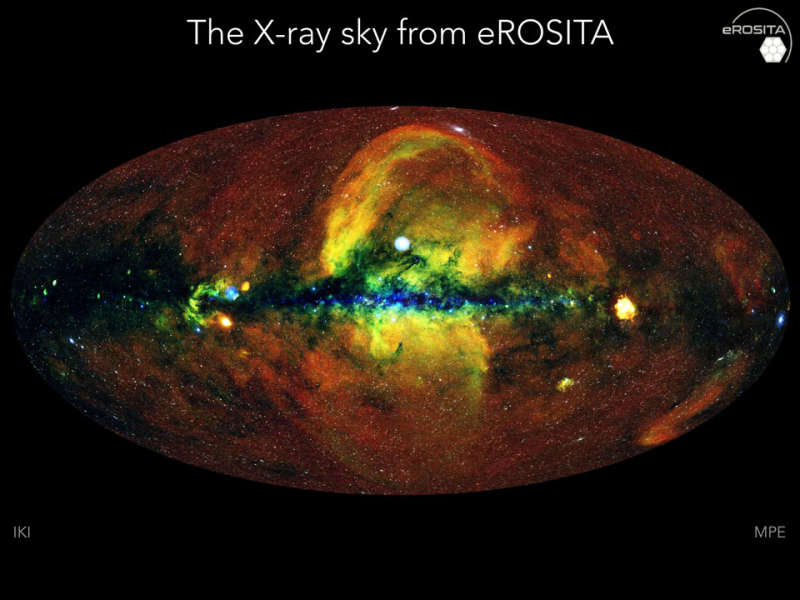Credit & Copyright: J. Sanders, H. Brunner, A. Merloni & eSASS
Team
(MPE);
E. Churazov, M. Gilfanov, R. Sunyaev
(IKI)
Explanation:
What if you could see X-rays?
The night sky would seem a strange and unfamiliar place.
X-rays are about 1,000 times
more energetic than
visible light
photons and are produced by
violent explosions
and high temperature astronomical environments.
Instead of the familiar steady stars, the
sky would seem to be
filled with exotic stars, active galaxies, and hot supernova
remnants.
The
featured X-ray image
captures in
unprecedented detail
the entire sky in X-rays as seen by the
eROSITA telescope onboard
Spektr-RG satellite,
orbiting around the
L2 point of the Sun-Earth system,
launched last year.
The image shows the plane of our Milky Way galaxy across the center, a diffuse and
pervasive
X-ray background,
the hot interstellar bubble known as the
North Polar Spur, sizzling supernova remnants such as
Vela, the
Cygnus Loop and
Cas A,
energetic binary stars including
Cyg X-1 and Cyg X-2, the
LMC galaxy, and the
Coma,
Virgo, and
Fornax clusters of galaxies.
This first sky scan by
eROSITA located over one million X-ray sources,
some of which are not understood and will surely be topics for future research.
1999 2000 2001 2002 2003 2004 2005 2006 2007 2008 2009 2010 2011 2012 2013 2014 2015 2016 2017 2018 2019 2020 2021 2022 2023 2024 2025 |
Yanvar' Fevral' Mart Aprel' Mai Iyun' Iyul' Avgust Sentyabr' Oktyabr' Noyabr' Dekabr' |
NASA Web Site Statements, Warnings, and Disclaimers
NASA Official: Jay Norris. Specific rights apply.
A service of: LHEA at NASA / GSFC
& Michigan Tech. U.
|
Publikacii s klyuchevymi slovami:
X-ray - rentgenovskaya astronomiya
Publikacii so slovami: X-ray - rentgenovskaya astronomiya | |
Sm. takzhe:
Vse publikacii na tu zhe temu >> | |
